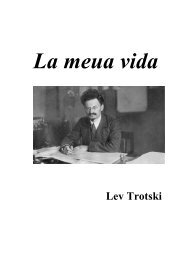- Page 1 and 2: Leon Trotsky: 1905: Table of Conten
- Page 3 and 4: Leon Trotsky: 1905: Table of Conten
- Page 5 and 6: Leon Trotsky: 1905: Preface to the
- Page 7 and 8: Leon Trotsky: 1905: Preface to the
- Page 9 and 10: Leon Trotsky: 1905: Preface to the
- Page 11 and 12: Leon Trotsky: 1905: CHAPTER 1-- Rus
- Page 13 and 14: Leon Trotsky: 1905: CHAPTER 1-- Rus
- Page 15 and 16: Leon Trotsky: 1905: CHAPTER 2-- Rus
- Page 17 and 18: Leon Trotsky: 1905: CHAPTER 2-- Rus
- Page 19 and 20: Leon Trotsky: 1905: CHAPTER 2-- Rus
- Page 21 and 22: Leon Trotsky: 1905: CHAPTER 2-- Rus
- Page 23: Leon Trotsky: 1905: CHAPTER 3 -- Th
- Page 27 and 28: Leon Trotsky: 1905: CHAPTER 3 -- Th
- Page 29 and 30: Leon Trotsky: 1905: CHAPTER 3 -- Th
- Page 31 and 32: Leon Trotsky: 1905: CHAPTER 4 -- Th
- Page 33 and 34: Leon Trotsky: 1905: CHAPTER 4 -- Th
- Page 35 and 36: Leon Trotsky: 1905: CHAPTER 4 -- Th
- Page 37 and 38: Leon Trotsky: 1905: CHAPTER 4 -- Th
- Page 39 and 40: Leon Trotsky: 1905: CHAPTER 4 -- Th
- Page 41 and 42: Leon Trotsky: 1905: CHAPTER 4 -- Th
- Page 43 and 44: Leon Trotsky: 1905: CHAPTER 5 -- Th
- Page 45 and 46: Leon Trotsky: 1905: CHAPTER 5 -- Th
- Page 47 and 48: Leon Trotsky: 1905: CHAPTER 5 -- Th
- Page 49 and 50: Leon Trotsky: 1905: CHAPTER 5 -- Th
- Page 51 and 52: Leon Trotsky: 1905: CHAPTER 6 -- Ja
- Page 53 and 54: 9 would not have taken place if Cap
- Page 55 and 56: Leon Trotsky: 1905: CHAPTER 6 -- Ja
- Page 57 and 58: Leon Trotsky's 1905 CHAPTER 7 The S
- Page 59 and 60: Leon Trotsky: 1905: CHAPTER 7 -- Th
- Page 61 and 62: Leon Trotsky: 1905: CHAPTER 7 -- Th
- Page 63 and 64: Leon Trotsky: 1905: CHAPTER 7 -- Th
- Page 65 and 66: Leon Trotsky: 1905: CHAPTER 7 -- Th
- Page 67 and 68: Leon Trotsky: 1905: CHAPTER 7 -- Th
- Page 69 and 70: Leon Trotsky: 1905: CHAPTER 8 The C
- Page 71 and 72: Leon Trotsky: 1905: CHAPTER 8 The C
- Page 73 and 74: Leon Trotsky: 1905: CHAPTER 8 The C
- Page 75 and 76:
Leon Trotsky: 1905: CHAPTER 9 Octob
- Page 77 and 78:
Leon Trotsky: 1905: CHAPTER 9 Octob
- Page 79 and 80:
Leon Trotsky: 1905: CHAPTER 10 Witt
- Page 81 and 82:
Leon Trotsky: 1905: CHAPTER 10 Witt
- Page 83 and 84:
Leon Trotsky: 1905: CHAPTER 11 The
- Page 85 and 86:
Leon Trotsky: 1905: CHAPTER 11 The
- Page 87 and 88:
Leon Trotsky: 1905: CHAPTER 12 The
- Page 89 and 90:
Leon Trotsky: 1905: CHAPTER 12 The
- Page 91 and 92:
Leon Trotsky: 1905: CHAPTER 12 The
- Page 93 and 94:
Leon Trotsky: 1905: CHAPTER 13 Stor
- Page 95 and 96:
Leon Trotsky: 1905: CHAPTER 13 Stor
- Page 97 and 98:
Leon Trotsky: 1905: CHAPTER 13 Stor
- Page 99 and 100:
Leon Trotsky: 1905: CHAPTER 13 Stor
- Page 101 and 102:
Leon Trotsky: 1905: CHAPTER 13 Stor
- Page 103 and 104:
Leon Trotsky: 1905: Chapter 14 Oppo
- Page 105 and 106:
Leon Trotsky: 1905: Chapter 14 Oppo
- Page 107 and 108:
Leon Trotsky: 1905: Chapter 14 Oppo
- Page 109 and 110:
Leon Trotsky: 1905: Chapter 15 The
- Page 111 and 112:
Leon Trotsky: 1905: Chapter 15 The
- Page 113 and 114:
Leon Trotsky: 1905: Chapter 15 The
- Page 115 and 116:
Leon Trotsky: 1905: Chapter 15 The
- Page 117 and 118:
Leon Trotsky: 1905: Chapter 16 Eigh
- Page 119 and 120:
Leon Trotsky: 1905: Chapter 16 Eigh
- Page 121 and 122:
Leon Trotsky: 1905: Chapter 17 The
- Page 123 and 124:
Leon Trotsky: 1905: Chapter 17 The
- Page 125 and 126:
Leon Trotsky: 1905: Chapter 17 The
- Page 127 and 128:
Leon Trotsky: 1905: Chapter 18 The
- Page 129 and 130:
Leon Trotsky: 1905: Chapter 18 The
- Page 131 and 132:
Leon Trotsky: 1905: Chapter 18 The
- Page 133 and 134:
Leon Trotsky: 1905: Chapter 18 The
- Page 135 and 136:
Leon Trotsky: 1905: Chapter 19 On t
- Page 137 and 138:
Leon Trotsky: 1905: Chapter 19 On t
- Page 139 and 140:
Leon Trotsky: 1905: Chapter 19 On t
- Page 141 and 142:
Leon Trotsky: 1905: Chapter 20 The
- Page 143 and 144:
Leon Trotsky: 1905: Chapter 20 The
- Page 145 and 146:
Leon Trotsky: 1905: Chapter 20 The
- Page 147 and 148:
Leon Trotsky: 1905: Chapter 20 The
- Page 149 and 150:
Leon Trotsky: 1905: Chapter 21 Dece
- Page 151 and 152:
Leon Trotsky: 1905: Chapter 21 Dece
- Page 153 and 154:
Leon Trotsky: 1905: Chapter 21 Dece
- Page 155 and 156:
Leon Trotsky: 1905: Chapter 21 Dece
- Page 157 and 158:
Leon Trotsky: 1905: Chapter 22 Summ
- Page 159 and 160:
Leon Trotsky: 1905: Chapter 22 Summ
- Page 161 and 162:
Leon Trotsky: 1905: Chapter 22 Summ
- Page 163 and 164:
Leon Trotsky: 1905: Chapter 22 Summ
- Page 165 and 166:
Leon Trotsky: 1905: Chapter 22 Summ
- Page 167 and 168:
Leon Trotsky: 1905: Chapter 22 Summ
- Page 169 and 170:
Leon Trotsky: 1905: Chapter 22 Summ
- Page 171 and 172:
Leon Trotsky: 1905: Chapter 23 Anne
- Page 173 and 174:
Leon Trotsky: 1905: Chapter 23 Anne
- Page 175 and 176:
Leon Trotsky: 1905: Chapter 23 Anne
- Page 177 and 178:
Leon Trotsky: 1905: Chapter 24 The
- Page 179 and 180:
Leon Trotsky: 1905: Chapter 24 The
- Page 181 and 182:
Leon Trotsky: 1905: Chapter 24 The
- Page 183 and 184:
Leon Trotsky: 1905: Chapter 24 The
- Page 185 and 186:
Leon Trotsky: 1905: Chapter 24 The
- Page 187 and 188:
political putrefaction. Opportunism
- Page 189 and 190:
When you re-read the correspondence
- Page 191 and 192:
Leon Trotsky: 1905: Chapter 25 Our
- Page 193 and 194:
Leon Trotsky: 1905: Chapter 25 Our
- Page 195 and 196:
Leon Trotsky: 1905: Chapter 25 Our
- Page 197 and 198:
Leon Trotsky: 1905: Chapter 26 The
- Page 199 and 200:
Leon Trotsky: 1905: Chapter 26 The
- Page 201 and 202:
Leon Trotsky: 1905: Chapter 26 The
- Page 203 and 204:
Leon Trotsky: 1905: Chapter 27 On t
- Page 205 and 206:
Leon Trotsky: 1905: Chapter 27 On t
- Page 207 and 208:
sixteenth -- was in practically unl
- Page 209 and 210:
Leon Trotsky: 1905: Chapter 27 On t
- Page 211 and 212:
Leon Trotsky: 1905: Chapter 27 On t
- Page 213 and 214:
Leon Trotsky: 1905: Chapter 28 Inst
- Page 215 and 216:
Leon Trotsky: 1905: Chapter 29 The
- Page 217 and 218:
Leon Trotsky: 1905: Chapter 29 The
- Page 219 and 220:
Leon Trotsky: 1905: Chapter 29 The
- Page 221 and 222:
Leon Trotsky: 1905: Chapter 29 The
- Page 223 and 224:
Leon Trotsky: 1905: Chapter 29 The
- Page 225 and 226:
Leon Trotsky: 1905: Chapter 30 The
- Page 227 and 228:
Leon Trotsky: 1905: Chapter 30 The
- Page 229 and 230:
Leon Trotsky: 1905: Chapter 30 The
- Page 231 and 232:
Leon Trotsky: 1905: Chapter 30 The
- Page 233 and 234:
Leon Trotsky: 1905: Chapter 30 The
- Page 235 and 236:
Leon Trotsky: 1905: Chapter 31 My S
- Page 237 and 238:
Leon Trotsky: 1905: Chapter 31 My S
- Page 239 and 240:
Leon Trotsky: 1905: Chapter 31 My S
- Page 241 and 242:
Leon Trotsky: 1905: Chapter 31 My S
- Page 243 and 244:
Leon Trotsky: 1905: Chapter 32 Ther
- Page 245 and 246:
Leon Trotsky: 1905: Chapter 32 Ther
- Page 247 and 248:
Leon Trotsky: 1905: Chapter 32 Ther
- Page 249 and 250:
Leon Trotsky: 1905: Chapter 32 Ther
- Page 251 and 252:
Leon Trotsky: 1905: Chapter 32 Ther
- Page 253 and 254:
Leon Trotsky: 1905: Chapter 32 Ther
- Page 255 and 256:
Leon Trotsky: 1905: Chapter 32 Ther
- Page 257 and 258:
Leon Trotsky: 1905: Chapter 33 Back
- Page 259 and 260:
Leon Trotsky: 1905: Chapter 33 Back
- Page 261 and 262:
Leon Trotsky: 1905: Chapter 33 Back
- Page 263 and 264:
Leon Trotsky: 1905: Chapter 33 Back
- Page 265 and 266:
Leon Trotsky: 1905: Chapter 33 Back
- Page 267 and 268:
Leon Trotsky: 1905: Chapter 33 Back
- Page 269 and 270:
Leon Trotsky: 1905: Chapter 33 Back
- Page 271 and 272:
Leon Trotsky: 1905: Chapter 33 Back
- Page 273 and 274:
Leon Trotsky: 1905: Chapter 33 Back
- Page 275 and 276:
Leon Trotsky: 1905: Chapter 33 Back
- Page 277 and 278:
Leon Trotsky: 1905: Chapter 33 Back
- Page 279 and 280:
Leon Trotsky: 1905: Chapter 33 Back
- Page 281 and 282:
Leon Trotsky: 1905: Chapter 33 Back
- Page 283 and 284:
Leon Trotsky: 1905: Chapter 33 Back
- Page 285 and 286:
Leon Trotsky: 1905: Chapter 33 Back
- Page 287 and 288:
The Collected Writings of Leon Trot
- Page 289 and 290:
The Collected Writings of Leon Trot
- Page 291:
Marxists Internet Archive | | Catal



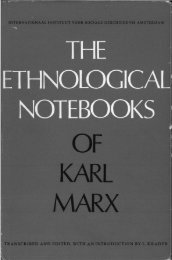

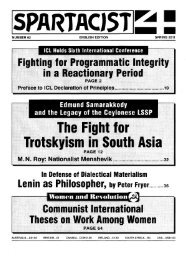

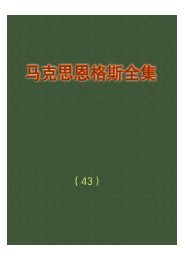
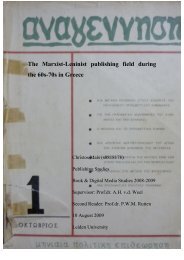

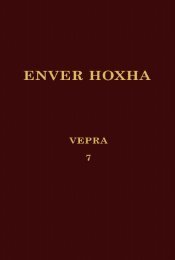
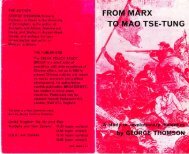

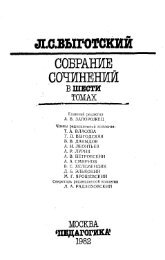
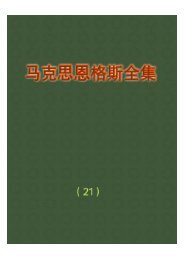
![tyf Enf=O=n]lgg](https://img.yumpu.com/47584932/1/190x245/tyf-enfonlgg.jpg?quality=85)
